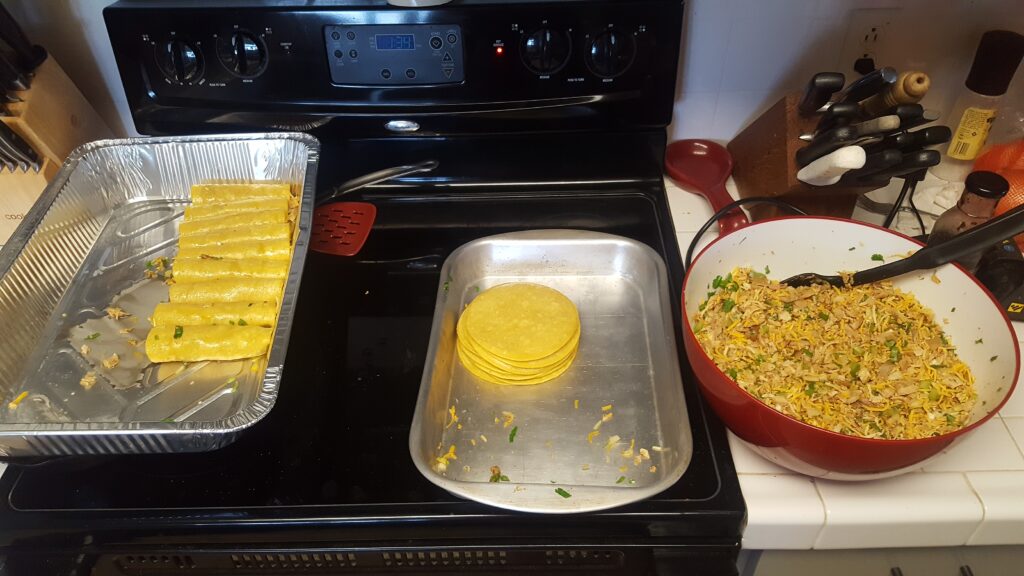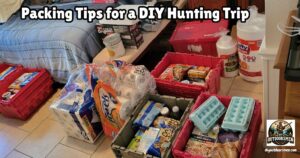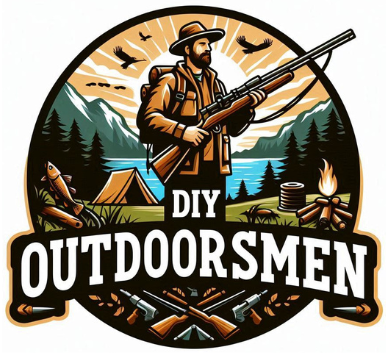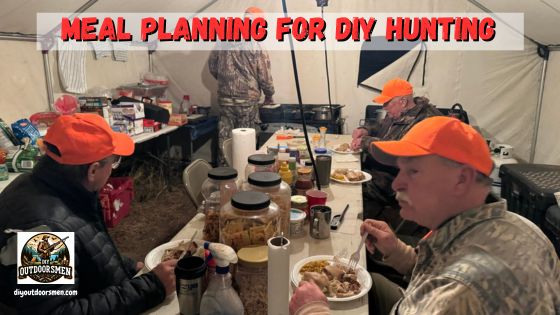Contents
I approach hunting meal planning and preparation with a focus on the key elements: nutrition, convenience, and longevity. These components are the backbone of not only surviving a hunting trip but also making sure I maintain high energy levels, and spend more time hunting and less time cooking.
QUICK LOOK: Tips for DIY Hunting Meal Planning and Prep
DIY hunting meal planning and preparation should focus on safety, convenience, nutrition, storage and cooking requirements on the hunt. You don’t want to be stuck in the tent cooking when you could be out hunting. Plan and pack for the 4 basics of breakfast, lunch, dinner, and snacks. All should provide both quick energy as well as protein for muscle maintenance and recovery from long days in the field. How, where, and the type of hunting, will determine what types of meals you should plan for and how you will pack and transport them.
Before diving into the specifics, it’s important to highlight the essential gear and ingredients. Dependable storage containers, a reliable cooler or portable fridge, cooking gear, and high-quality, non-perishable ingredients form the rudimentary checklist.
Nutritional Strategies for Hunters
Energy demands escalate when you’re out in the field hunting. Your body requires adequate fuel just like any finely-tuned machine. I focus on three macronutrients for sustained energy: proteins, fats, and carbohydrates.
Lean proteins, such as jerky or canned tuna, sustain muscle health. Fats from nuts or cheese offer long-lasting energy, while complex carbohydrates found in whole grains or vegetables provide immediate energy reservoirs.
Micronutrients matter too. A hunter’s diet should include vitamins and minerals essential for the physical and cognitive demands of hunting. I ensure to pack foods rich in iron, vitamin B12, and omega-3 fatty acids to support overall health. Hydration is equally essential. I always carry enough water and sometimes an electrolyte-replenishing drink.
Finally, it’s about when and how much to eat. I divide my day’s meals into portions that are easy to handle, guide my energy levels, and prevent any heavy, sleepy feelings. Eating smaller, nutrient-dense meals, and snacks throughout the day instead of large meals works best for me when I’m active.
The Foundation of DIY Hunting Meal Prep is Planning and Organization
Succeeding in hunting meal prep hinges on a solid plan. You need a straightforward, no-nonsense strategy to keep you well-fed and focused on the hunt. Here’s how to lay out your hunting meal prep foundation without any fluff.
- Start by considering the length of your trip and the conditions you’ll be facing. Will you have access to refrigeration? How about a way to heat your meals? Answer these questions to align your plan with your actual needs.
- Next up, make a meal plan. Detail out each day’s food: breakfast, lunch, dinner, and snacks. Think about variety to keep your meals interesting and focus on simplicity to minimize hassle in the field.
- Efficient grocery shopping is a huge time-saver. Organize your shopping list by sections of the store. Stick to your list to avoid unnecessary purchases that can overcomplicate your prep.
- Now, on to meal prep techniques. Batch cooking and freezing meals will save time and energy. Portion out your meals and snacks right after cooking so they’re ready to grab and go. Properly label everything. This will help you quickly find what you need when you’re out in the wild.
- Another smart move is to invest in quality storage containers. They’ll keep food fresh and protect it from the elements. Vacuum sealing is a pro tip for longer trips, as it significantly extends shelf life.
- Compact, high-energy meals are your best bet once you’re out there. Think about recipes that won’t weigh you down but will provide the necessary fuel. In the next section, I’ll share some targeted recipe ideas that are both practical and satisfying for any hunt.
Portable and Practical Recipe Ideas for DIY Hunting
Hunting meal prep isn’t just about throwing together a few snacks; it’s about fueling your body for what can be demanding physical activity. Let’s look at some high-energy, portable meal suggestions that cater to breakfast, lunch, and dinner in the field.
- Breakfast is your first opportunity to energize for the day. Think simple but substantial. Packable options such as granola bars, oatmeal, pre-packaged pasteriess, or pre-made breakfast burritos that can be heated over a camp stove are ideal.
- For lunch, consider foods that don’t require reheating. Sandwiches with cured meats, hard cheeses, and whole grain bread provide lasting energy. Alternatively, wraps filled with a mixture of beans, rice, and vegetables are both nutritious and satisfying.
- Dinner should be a time for replenishment. Pre-cooked meals like chili or stew, vacuum-sealed to lock in freshness, can be easily warmed. Another great option is pasta with a rich sauce full of lean meats and vegetables, offering a comforting end to a long day of hunting.
- Snacks should not be overlooked. They’re crucial for maintaining energy levels between meals. High-protein jerky, nuts and seeds, candy bars, and energy bars are lightweight and easy to pack. Remember to include electrolyte-containing drink packets that can be mixed with water to support hydration.
Adaptation of your favorite home recipes for these hunting meals is possible with some creativity. Dehydrate ingredients when you can to reduce weight and increase preservation. Vacum packing, and freezing are also great ways to pack your meals.

Always consider the practicality of your hunting meal choices by emphasizing simplicity and minimal preparation on the go. You don’t want to spend your hunt cooking instead of hunting.
Safety and Preservation to Ensure Freshness and Quality
Now that you’ve prepared your hunting meals and packed your kit, I need to emphasize the importance of food safety and preservation. This isn’t just about keeping your food palatable; it’s crucial for your health out in the wild. Unexpected food-borne illness can quickly turn a hunting trip into a danger.
- Always keep cold foods cold and hot foods hot. The old restaurant rule of: Below 40 degrees F or above 140, will keep you in the safe zone. If you’re bringing meat or dairy products, ensure they’re stored at safe temperatures using reliable cooling packs.This isn’t the place to skimp; invest in good quality coolers that can maintain temperature for long periods. Check your ice levels daily to ensure your food stays cold and safe.
- Preservation techniques aren’t complex but they’re essential. For example, vacuum sealing meals not only saves space but also extends their shelf life and keeps contaminants out. Dehydrating fruits and meats is another tried-and-test method for snacks that last.
- Consider your packaging. It should be lightweight, durable, and preferably waterproof. Sealable bags are a good bet—they’re resilient and you can get most of the air out to minimize spoilage and keep water out as ice melts in your coolers.
- Remember, even the best-prepared meal can go bad under the wrong conditions. Regularly check the integrity of your food, never ignore off-odors, and when in doubt, throw it out. Your health and safety are your top priority when you’re miles from the nearest hospital.
With these safety and preservation strategies in practice, you’re set to embark on your DIY Hunting adventure with confidence. Good hunting, and enjoy the delicious, safe, and well-preserved hunting meals that will keep you energized for the journey ahead.
As always, stay safe, enjoy the journey and please try to leave it cleaner than you found it. If you have any comments, questions, ideas, or suggestions please leave them in the comment section below and I’ll get back to you ASAP. You can follow us on YouTube: Man Art Creations for videos of our DIY Adventures.
Read More Hunting Tips
- 14 Tips And Tactics For Public Land Mule Deer Hunting

- 6 Features of Waterproof Ground Blinds For Wet-condition Elk Hunting

- 4 of the Best DIY Elk Hunting Areas In Colorado

- 8 Tips for Choosing the Best DIY Elk Hunting States

- 5 Hunting Gear Packing List Essentials For DIY Trips

- Using Portable Blinds For Elk Hunting

P.S. – Thanks so much for checking out our blog we really appreciate it. Just so you know, we may receive a commission if you click on some of the links that appear on our site. This helps us keep our content free and up-to-date for everyone. We appreciate your support!



